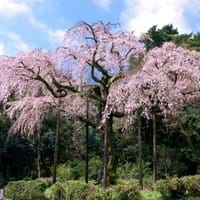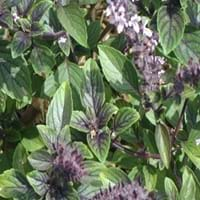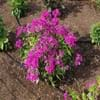Life Span
Perennial
Perennial
Type
Flowering Plants, Fruits, Trees
Herbs
Origin
Anatolia, Asia, Europe, Iran, Maghreb, Morocco, Norway, The Hiamalayas
Hybrid origin
Types
Flowering Cherries, Sour Cherries, Sand Cherries, Sweet Cherries, Capulin Cherries
Not available
Number of Varieties
Not Available
Habitat
Forest edges, Wild, Woods
gardens, Grassland, Hillside, meadows
USDA Hardiness Zone
4-8
9-11
Sunset Zone
4, 5, 6, 7, 15, 16, 17
A1, A2, A3, H1, H2, 1a, 1b, 2a, 2b, 3a, 3b, 4, 5, 6, 7, 8, 9, 10, 11, 12, 13, 14, 15, 16, 17, 18, 19, 20, 21, 22, 23, 24
Habit
Upright/Erect
Oval or Rounded
Flower Color
White
Pink, Lavender
Flower Color Modifier
Not Available
Bicolor
Fruit Color
Red
Not Available
Leaf Color in Spring
Dark Green
Purple
Leaf Color in Summer
Orange
Green, Purple
Leaf Color in Fall
Orange
Green, Purple
Leaf Color in Winter
Orange
Light Green
Plant Season
Spring, Summer
Spring, Summer, Fall, Winter
Sunlight
Full Sun, Partial shade
Full Sun, Partial Sun
Type of Soil
Loamy, Well drained
Loam, Sand
The pH of Soil
Slightly Acidic
Neutral
Soil Drainage
Average
Well drained
Bloom Time
Early Spring, Spring
Indeterminate
Tolerances
Heat And Humidity, Not Available
Drought
Where to Plant?
Ground
Ground
How to Plant?
Grafting, Seedlings, Transplanting
Stem Planting
Plant Maintenance
Medium
Medium
Watering Requirements
Never Over-water, Over-watering can cause leaf problems or root diseases, Prefer drip-irrigation instead of Over-head watering, Water twice a day in the initial period
Requires regular watering
In Summer
Lots of watering
Lots of watering
In Spring
Moderate
Moderate
In Winter
Average Water
Average Water
Soil pH
Slightly Acidic
Neutral
Soil Type
Loamy, Well drained
Loam, Sand
Soil Drainage Capacity
Average
Well drained
Sun Exposure
Full Sun, Partial shade
Full Sun, Partial Sun
Pruning
Don't prune in the fall, Prune if you want to improve plant shape, Prune in late winter, Remove dead or diseased plant parts, Remove deadheads
Cut or pinch the stems, Do not prune during shooting season, Prune regularly, Prune to stimulate growth, Remove dead leaves, Remove dead or diseased plant parts, Remove deadheads
Fertilizers
All-Purpose Liquid Fertilizer
All-Purpose Liquid Fertilizer
Pests and Diseases
Aphids, Bacterial Canker, Black Knot, Brown Rot, Caterpillars
Red blotch
Plant Tolerance
Drought
Drought
Flower Petal Number
Not Available
Single
Fragrant Bark/Stem
No
Yes
Foliage Texture
Not Available
Coarse
Foliage Sheen
Not Available
Glossy
Allergy
Swelling in the face
no allergic reactions
Aesthetic Uses
Showy Purposes
Not Used For Aesthetic Purpose
Beauty Benefits
Not Available
Not Available
Environmental Uses
Air purification
Air purification
Medicinal Uses
Arthritis, Gout, Kidney problems, Rheumatoid arthritis, Swelling
constipation, Diarrhea, Headache, Kidney problems, Stomach pain
Part of Plant Used
Flowers, Fruits
Whole plant
Other Uses
Wood is used for making furniture
Used As Food, Used as Ornamental plant, Used for fragrance
Used As Indoor Plant
No
No
Used As Outdoor Plant
Yes
Yes
Garden Design
Not Available
Container, Edible, Herb / Vegetable, Mixed Border
Botanical Name
Prunus avium
OCIMUM 'African Blue'
Common Name
Cherry Tree
African Blue Basil, Hybrid Basil
In Hindi
चेरी का पेड़
अफ्रीकी ब्लू तुलसी
In German
Kirschbaum
African Blue Basilikum
In French
Cerisier
Bleu basilic africaine
In Spanish
Cerezo
Albahaca azul africana
In Greek
κερασιά
Αφρικής Μπλε βασιλικό
In Portuguese
árvore de cereja
Africano manjericão azul
In Polish
wiśniowe drzewo
Afrykański Niebieski bazylią
In Latin
Cherry
अफ्रीकी ब्लू तुलसी
Phylum
Magnoliophyta
Not Available
Class
Magnoliopsida
Magnoliopsida
Family
Rosaceae
Lamiaceae
Clade
Angiosperms, Eudicots, Rosids
Basal Tricolpates
Tribe
Not Available
Not Available
Subfamily
Not Available
Not Available
Number of Species
Not Available
Not Available
Importance of Cherry Tree and African Blue Basil
Want to have the most appropriate plant for your garden? You might want to know the importance of Cherry Tree and African Blue Basil. Basically, these two plants vary in many aspects. Compare Cherry Tree and African Blue Basil as they differ in many characteristics such as their life, care, benefits, facts, etc. Every gardener must at least have the slightest clue about the plants he wants to plant in his garden. Compare their benefits, which differ in many ways like facts and uses. The medicinal use of Cherry Tree is Arthritis, Gout, Kidney problems, Rheumatoid arthritis and Swelling whereas of African Blue Basil is constipation, Diarrhea, Headache, Kidney problems and Stomach pain. Cherry Tree has beauty benefits as follows: Not Available while African Blue Basil has beauty benefits as follows: Not Available.
Compare Facts of Cherry Tree vs African Blue Basil
How to choose the best garden plant for your garden depending upon its facts? Here garden plant comparison will help you to solve this query. Compare the facts of Cherry Tree vs African Blue Basil and know which one to choose. As garden plants have benefits and other uses, allergy is also a major drawback of plants for some people. Allergic reactions of Cherry Tree are Swelling in the face whereas of African Blue Basil have no allergic reactions respectively. Having a fruit bearing plant in your garden can be a plus point of your garden. Cherry Tree has showy fruits and African Blue Basil has no showy fruits. Also Cherry Tree is flowering and African Blue Basil is not flowering . You can compare Cherry Tree and African Blue Basil facts and facts of other plants too.





